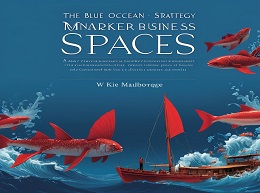Mastering the VC Game

Navigating the Venture Capital Landscape
"Mastering the VC Game: A Venture Capital Insider Reveals How to Get from Start-up to IPO on Your Terms" by Jeffrey Bussgang offers a comprehensive guide for entrepreneurs seeking to understand and navigate the complex world of venture capital (VC). Bussgang, a successful entrepreneur-turned-VC, provides a unique perspective from both sides of the table, offering invaluable insights and strategies to secure funding and build successful businesses. This review delves into the key concepts and lessons from the book, supplemented with real-world examples and practical advice to engage readers and provide a roadmap for entrepreneurial success.
The Author's Unique Position
Jeffrey Bussgang’s dual experience as both an entrepreneur and a venture capitalist gives him a distinctive edge in explaining the dynamics of the VC world. His firsthand knowledge of the challenges entrepreneurs face, coupled with his insider perspective on the workings of venture capital firms, makes his insights particularly valuable.
Bussgang's Journey
Bussgang's own journey from co-founding Upromise, which was sold to Sallie Mae, to becoming a general partner at Flybridge Capital Partners illustrates the dual perspective he brings. His transition from entrepreneur to VC provides him with a deep understanding of both the aspirations of founders and the expectations of investors.
Phase 1: Getting Started - From Idea to Funding
The initial phase of securing venture capital involves transforming an idea into a viable business proposition and attracting initial funding. Bussgang emphasizes the importance of a compelling pitch and a solid business plan.
Dropbox’s Initial Pitch
Dropbox’s founder Drew Houston created a simple yet effective pitch that clearly demonstrated the problem and solution. His early pitch video, which included a basic demo, helped attract the attention of Sequoia Capital, leading to their initial funding round.
Phase 2: Building Relationships with Investors
In the second phase, entrepreneurs must focus on building strong relationships with potential investors. Bussgang highlights the importance of finding the right venture capital partners who not only provide funding but also add strategic value to the business.
Instagram and Benchmark Capital
Kevin Systrom and Mike Krieger, the founders of Instagram, chose to partner with Benchmark Capital because of their expertise and reputation in the tech industry. This strategic partnership helped Instagram navigate its rapid growth and eventually led to its acquisition by Facebook for $1 billion.
Phase 3: Negotiating the Deal
Negotiating a fair and advantageous deal is crucial for long-term success. Bussgang provides practical advice on term sheets, valuation, and deal structure. He emphasizes the importance of understanding the implications of different terms and conditions to avoid potential pitfalls.
Key Elements of a Term Sheet
- Valuation: Determining the value of the company at the time of investment.
- Equity Stake: The percentage of ownership the VC firm will receive in exchange for their investment.
- Control Rights: Governance and decision-making powers granted to investors.
Zynga’s Funding Rounds
Zynga, the social game developer, strategically negotiated multiple funding rounds, each with terms that aligned with their growth objectives. Their careful management of equity and control allowed them to scale rapidly while retaining sufficient control over their operations.
Phase 4: Scaling the Business
Once funding is secured, the focus shifts to scaling the business. Bussgang discusses the challenges of managing rapid growth, building a strong team, and expanding market reach. He emphasizes the importance of maintaining a clear vision and staying adaptable.
Building a Strong Team
As businesses scale, the need for a competent and cohesive team becomes critical. Bussgang advises entrepreneurs to invest in recruiting and retaining top talent.
LinkedIn’s Growth Strategy
LinkedIn’s co-founder, Reid Hoffman, prioritized building a strong leadership team to navigate the company’s rapid growth. By bringing in experienced executives and fostering a collaborative culture, LinkedIn successfully scaled to become the world’s largest professional networking platform.
Phase 5: Navigating Challenges and Pivots
Every startup faces unexpected challenges and potential pivots. Bussgang underscores the importance of resilience and adaptability. He shares stories of companies that successfully navigated pivots to find their true market fit.
Twitter’s Pivot
Twitter started as a podcasting platform called Odeo. When the founders realized the limited market potential, they pivoted to focus on the microblogging service we know today. This strategic pivot was crucial to their eventual success.
Phase 6: Preparing for Exit
The final phase involves preparing for an exit, whether through acquisition, IPO, or other means. Bussgang provides insights into timing, valuation, and the strategic considerations involved in planning a successful exit.
Types of Exits
- Acquisition: Selling the company to another business.
- IPO: Offering shares of the company to the public.
- Merger: Combining with another company to create a new entity.
WhatsApp’s Acquisition
WhatsApp’s acquisition by Facebook for $19 billion exemplifies a successful exit strategy. The founders strategically positioned the company for acquisition by focusing on user growth and engagement, making it an attractive target for Facebook.
Importance of Fit
Bussgang emphasizes the importance of finding the right fit between entrepreneurs and investors. A strong alignment of values, vision, and expectations can significantly enhance the partnership’s success.
Airbnb and Sequoia Capital
Airbnb’s partnership with Sequoia Capital highlights the importance of fit. Sequoia’s experience in scaling tech startups and their alignment with Airbnb’s vision played a crucial role in the company’s rapid growth and global expansion.
Continuous Learning and Adaptation
One of the recurring themes in Bussgang’s book is the necessity for continuous learning and adaptation. The business landscape is dynamic, and successful entrepreneurs are those who remain flexible and open to change.
PayPal’s Iterative Process
PayPal’s early years involved constant iterations and pivots to adapt to market needs and regulatory challenges. Their willingness to learn and adapt was instrumental in their eventual success as a leading online payment platform.
Building a Strong Network
Bussgang underscores the value of building a robust professional network. Relationships with mentors, advisors, and other entrepreneurs can provide invaluable support and guidance throughout the entrepreneurial journey.
LinkedIn’s Networking Power
LinkedIn itself is a testament to the power of professional networking. Co-founder Reid Hoffman leveraged his extensive network to attract talent, investors, and partners, driving LinkedIn’s growth and success.
A Blueprint for Entrepreneurial Success
"Mastering the VC Game" by Jeffrey Bussgang is an essential read for aspiring and current entrepreneurs. Bussgang’s insights, drawn from his dual experience as an entrepreneur and a venture capitalist, offer a comprehensive guide to navigating the complexities of the venture capital world. The book provides practical advice on securing funding, building relationships, negotiating deals, and scaling businesses, all while maintaining a clear vision and adaptability.
By incorporating real-world examples, Bussgang brings his lessons to life, making the book not only informative but also engaging. Whether you are at the beginning of your entrepreneurial journey or looking to take your startup to the next level, "Mastering the VC Game" provides the tools and strategies needed to succeed in the competitive landscape of venture capital.













